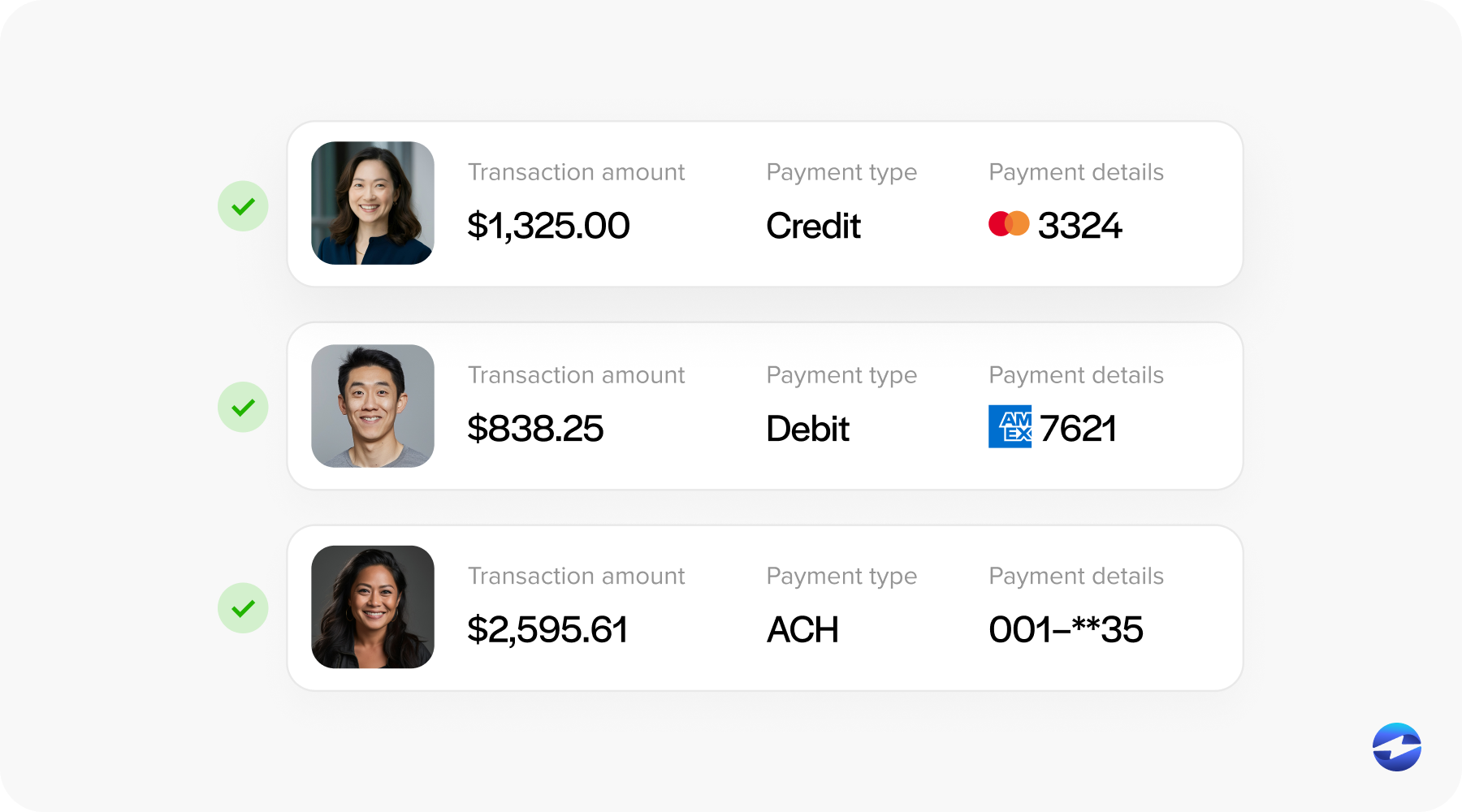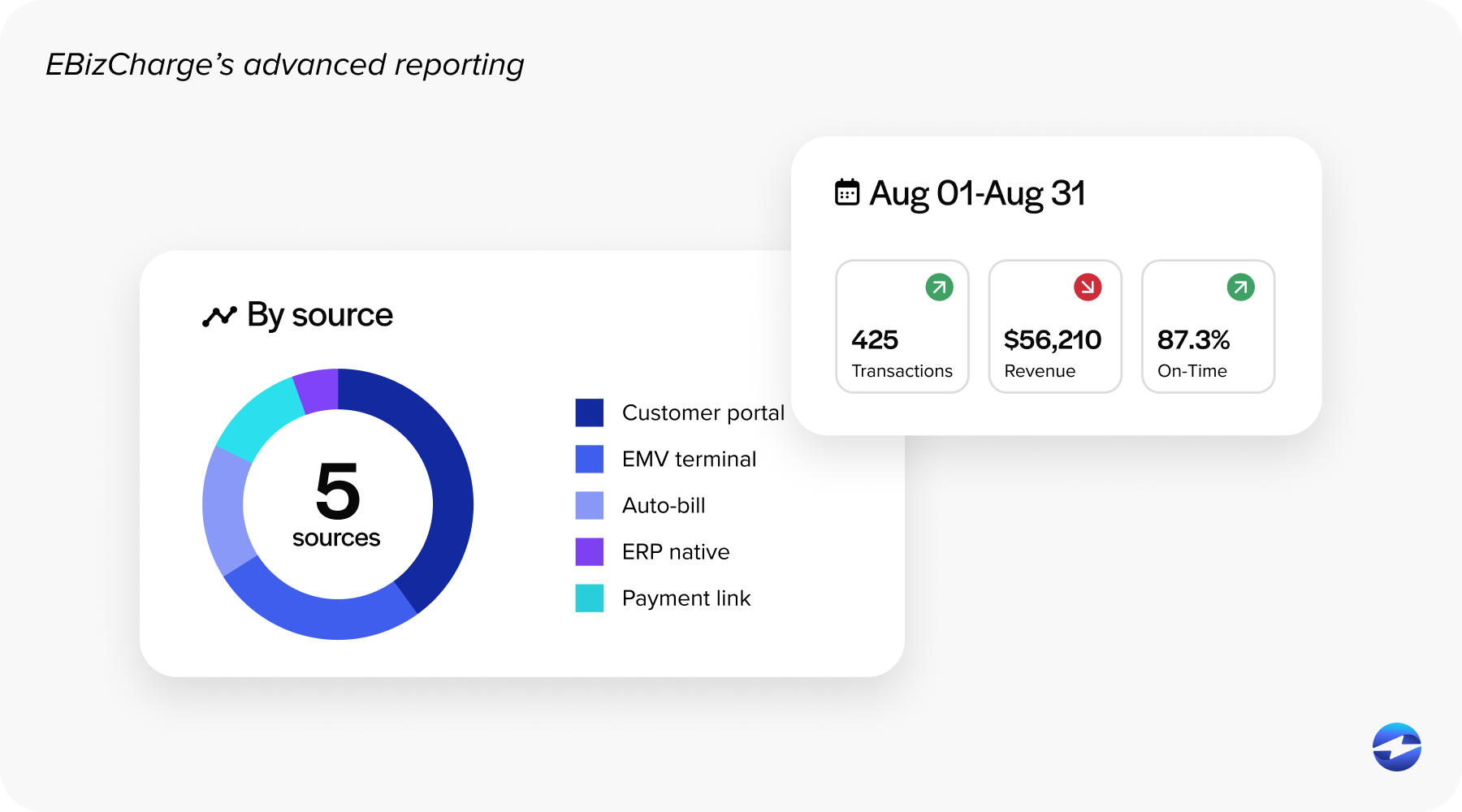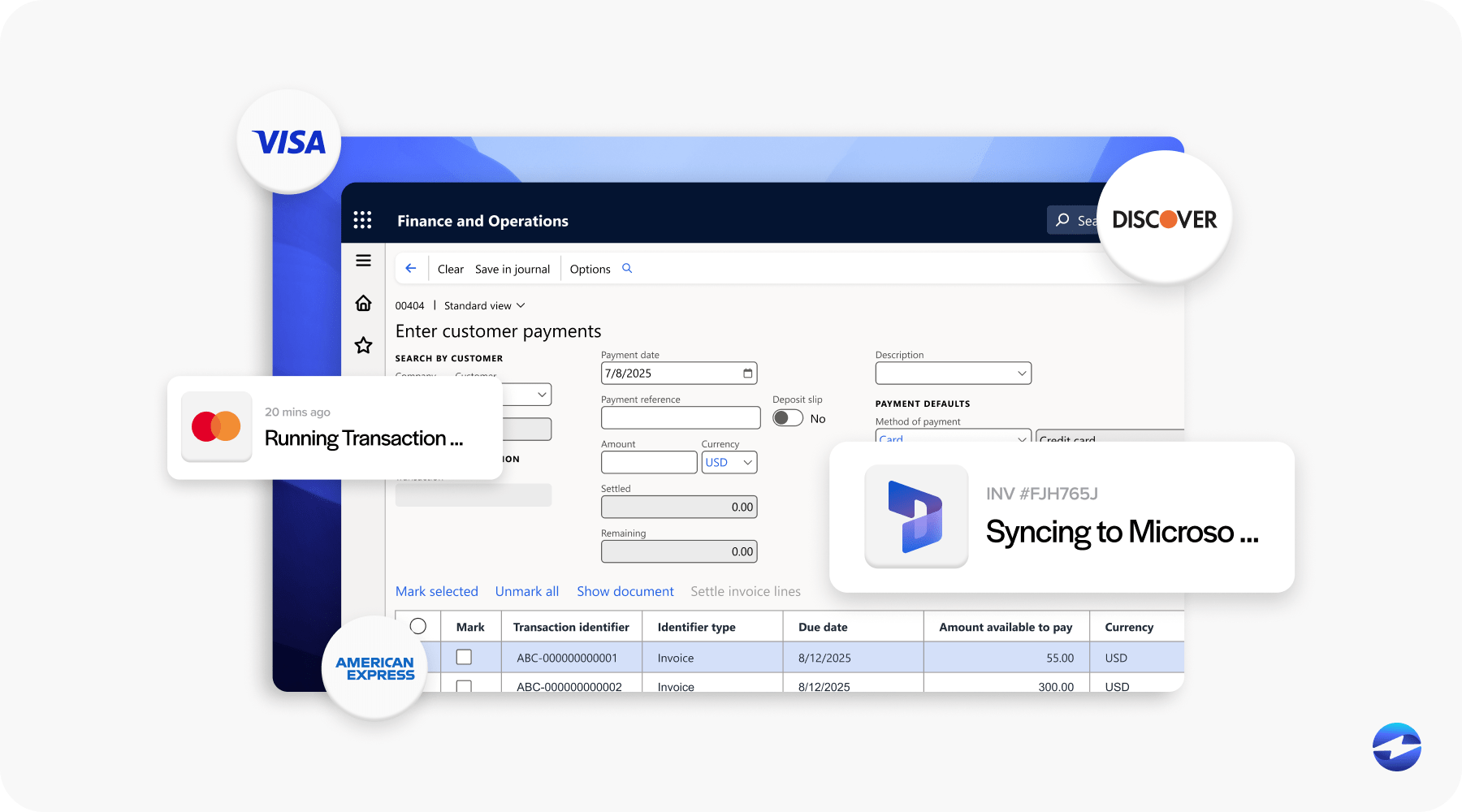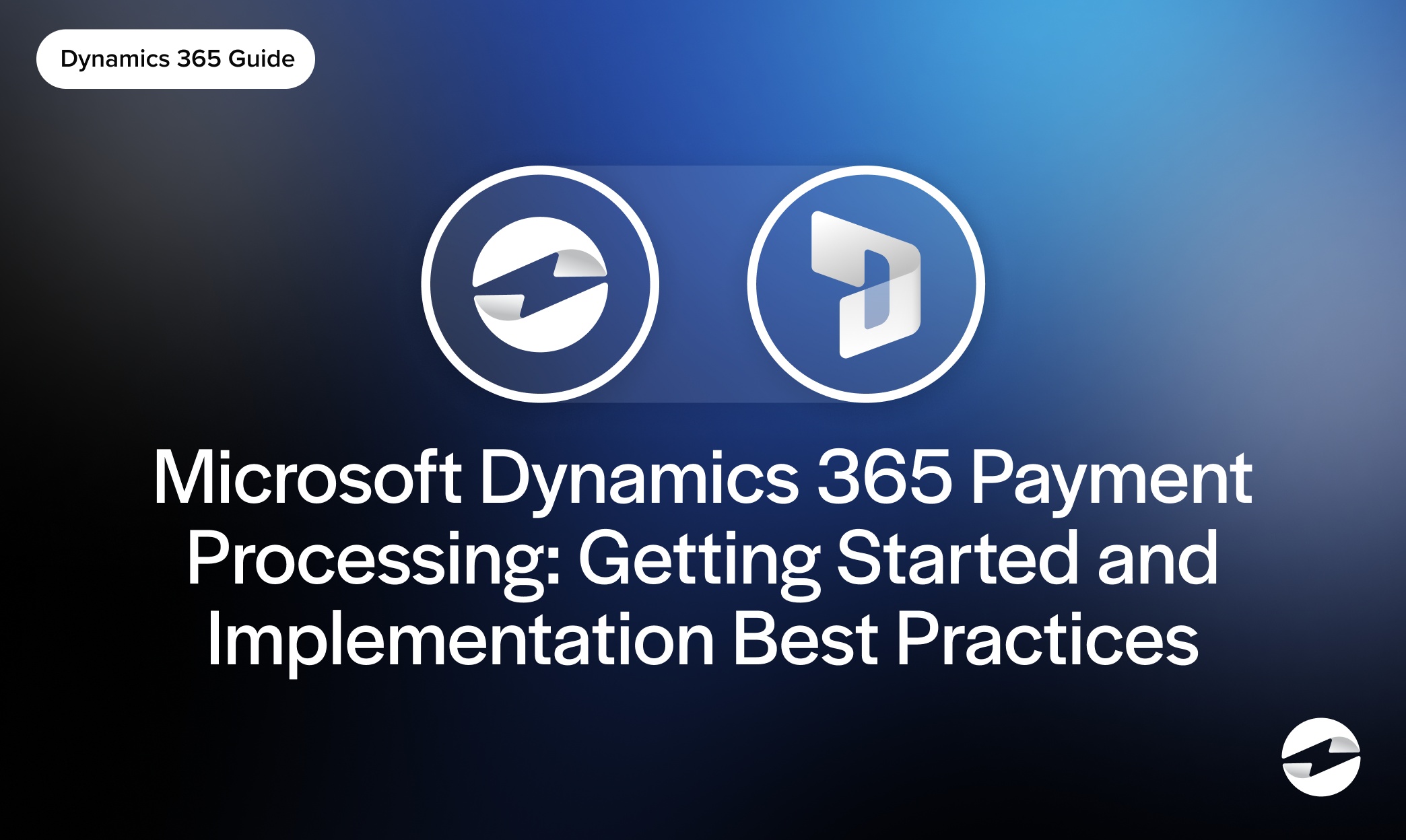Blog > Microsoft Dynamics 365 Payment Processing: Getting Started and Implementation Best Practices
Microsoft Dynamics 365 Payment Processing: Getting Started and Implementation Best Practices
Getting paid shouldn’t feel like a constant struggle. For many finance and operations teams, though, that’s exactly what happens when payments are handled outside of the enterprise resource planning (ERP) system. Manual reconciliations, duplicate data entry, and payment delays eat up valuable time. That’s why integrating payments directly into Microsoft Dynamics 365 can make such a difference. With Microsoft Dynamics 365 payment processing, you gain accuracy, visibility, and speed in one place.
This guide is written for finance teams, IT managers, and business leaders who want practical advice. It’ll cover what Dynamics 365 payment processing can do, how to set it up, and the best practices to keep things running smoothly. This guide will also explore how third-party tools like EBizCharge can extend what’s possible with a Dynamics 365 payment gateway.
Understanding Payment Processing in Microsoft Dynamics 365
Microsoft Dynamics 365 isn’t just an ERP or customer relationship management (CRM) system—it’s a platform designed to manage core business functions in one connected space. By bringing Microsoft payment processing into that environment, you eliminate the friction of disconnected systems. Payments, billing, and accounting data flow together without requiring extra steps.
When you enable Microsoft Dynamics 365 payment processing, invoices generated inside the system tie directly to accounts receivable and the general ledger. That means once a payment clears, your books update automatically. No waiting, no guesswork, no separate reconciliation process.
The benefits of this connection are straightforward: faster collections, fewer errors, and a clearer picture of your company’s financial health. With Microsoft Dynamics invoice processing aligned to payments, you know your data is both accurate and current.
Core Features of Dynamics 365 Payment Processing
Every organization has different needs, but a few key features stand out when it comes to Microsoft Dynamics payment processing.

Multiple Payment Methods
Customers want options. Microsoft Dynamics 365 credit card processing lets you handle credit and debit payments online or in person with a Point of Sale system. ACH transfers and digital wallets can be added as well, that flexibility makes it easier to support both one-time transactions and recurring billing models.
Integration with Modules
Payments don’t sit in isolation. With Dynamics 365 payment integration, each transaction updates accounts receivable, the general ledger, and even sales data in real time. That means everyone—from your AR clerks to your CFO—can rely on the same set of numbers.
Security and Compliance
Security is non-negotiable. A solid Microsoft Dynamics 365 payment gateway will be compliant with Payment Card Industry Data Security Standards (PCI-DSS), including features like encryption and fraud monitoring. Role-based permissions also help ensure that only the right people can access sensitive payment data. This keeps your company compliant and your customers safe.
Reporting and Analytics
A big part of Microsoft Dynamics payment processing is visibility. Built-in dashboards help track payment timelines, spot late accounts, and forecast cash flow. Strong reporting turns payment data into something your team can act on.

Together, these features provide the building blocks for a reliable, transparent payment system inside Dynamics 365.
Getting Started with Payment Processing in Dynamics 365
Getting set up doesn’t have to feel overwhelming. By breaking it down into steps, your team can configure Microsoft Dynamics 365 payment processing in a more manageable way.
Prerequisites
Before turning anything on, ensure you have the right permissions in place. Confirm that your team understands your current payment workflows and where the pain points are. That way, you’ll know what to prioritize once the system is live.
Setting Up Payment Modules
Within Dynamics 365, you’ll set up and enable the payment features that tie directly into the system. This includes creating customer and vendor payment records, setting payment terms, and configuring invoice templates. This setup ensures smooth Microsoft Dynamics invoice processing once transactions begin.
Connecting to a Payment Processor
Microsoft offers built-in tools for Microsoft Dynamics payment processing, but many organizations find that a third-party integration provides more flexibility. With providers like EBizCharge, you can access lower fees, better customer portals, and enhanced reporting. Choosing the right payment processor upfront saves you headaches later.
Testing the Configuration
Never skip testing. Run sample transactions to confirm that invoices are properly posted in accounts receivable and the general ledger. Testing ensures that your Dynamics 365 payment gateway is configured correctly before rolling it out to your customer base.
By taking your time in this stage, you’ll avoid costly mistakes down the road.
Best Practices for Implementation
Getting set up is only half the battle. To get the most out of Microsoft Dynamics payment processing, it’s important to follow a few best practices.
Choose the Right Payment Processor
Not all processors are created equal. Look for a payment processing solution that integrates directly with Microsoft Dynamics 365. Check fees, customer support, and scalability. And if you need advanced options like customer portals or recurring billing, make sure your chosen payment solution can support them.
Automate Where Possible
Automation saves time and reduces errors. Use Dynamics to schedule invoice reminders, automate reconciliations, and post payments directly. This makes Microsoft Dynamics 365 credit card processing much smoother and helps finance teams focus on higher-level tasks.
Focus on Security
Always prioritize compliance and security. Regularly review user permissions and run compliance checks on your Microsoft Dynamics 365 payment gateway. Fraud detection tools can catch unusual activity before it becomes a problem.
Train Your Team
Technology only works if your people know how to use it. Train across departments so AR staff, sales teams, and managers all understand how Dynamics 365 payment processing works. Familiarity reduces mistakes and builds confidence.
Use Reporting to Drive Improvements
Take advantage of reporting tools built into Dynamics. Payment dashboards provide insight into customer behavior and payment trends. By analyzing that data, you can improve cash flow, reduce late payments, and spot opportunities to optimize workflows.
Together, these best practices help you get more from your Dynamics 365 payment integration.
Benefits of Integrating EBizCharge with Dynamics 365
While Microsoft’s tools cover the basics, third-party platforms like EBizCharge add depth to Microsoft Dynamics payments. EBizCharge integrates directly, so you can process transactions without leaving Dynamics 365. The benefits are clear:

- Payments post directly into accounts receivable and the general ledger without extra steps.
- Many businesses save on transaction fees compared to standard options.
- Customers gain access to an easy-to-use payment portal, which speeds up collections.
- Reconciliation becomes quicker and more transparent with synced data.
By combining Microsoft Dynamics 365 payment processing with EBizCharge, you get a stronger system overall. It’s a payment processing solution designed to save time, cut costs, and improve the customer experience.
Maximizing Efficiency with Dynamics 365
Payment processing isn’t just about moving money—it’s about keeping your business efficient and your customers happy. With Microsoft Dynamics 365 payment processing, you gain the advantage of real-time integration, secure workflows, and detailed reporting.
By following best practices and using the right Microsoft Dynamics 365 payment gateway, your team can simplify collections, strengthen compliance, and reduce manual effort. And when you extend that foundation with third-party integration like EBizCharge, you build a more resilient, scalable payment system.
For finance and operations teams already using Dynamics, now is the time to rethink how payments fit into your workflows. With the right setup, Microsoft Dynamics payment processing becomes more than a back-office function—it becomes a tool for growth.
